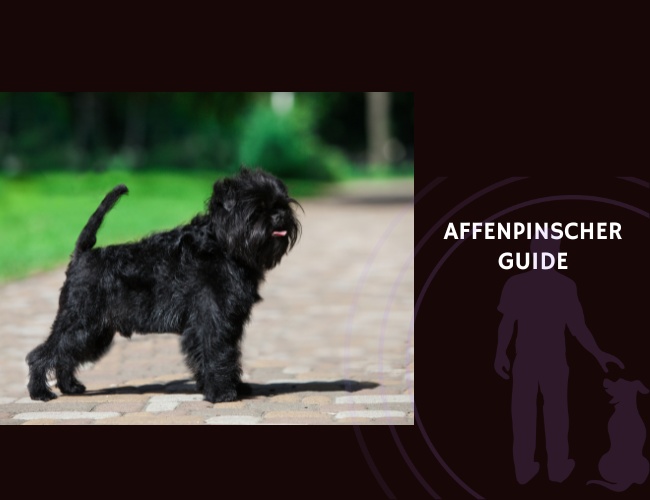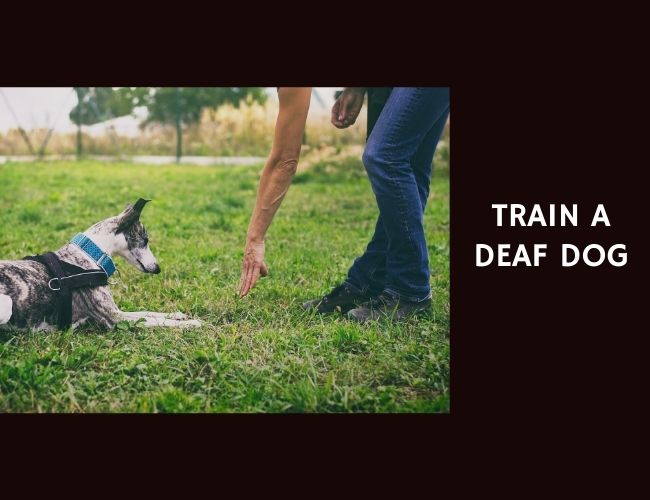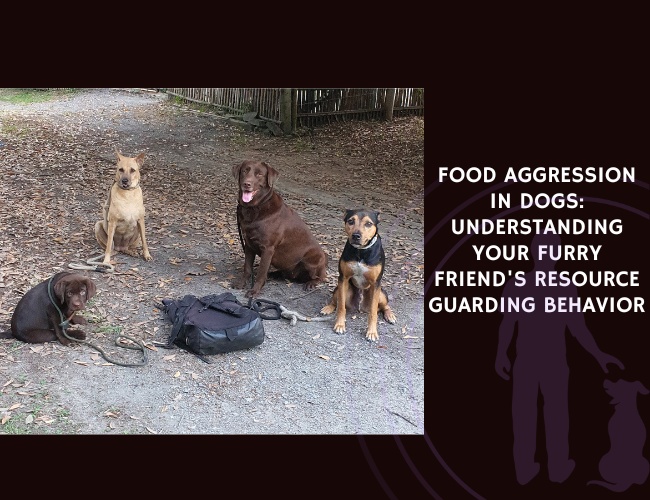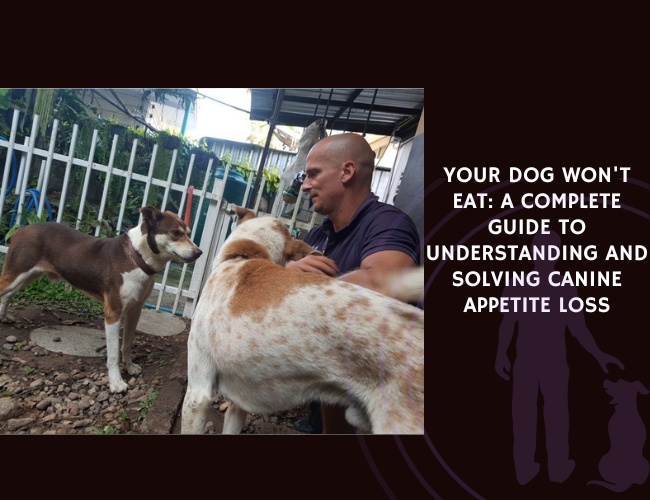Introduction: Meeting the Mischievous Monkey Dog
When you first encounter an Affenpinscher, you might find yourself doing a double-take – is that a dog or a tiny, mustached monkey peering back at you with those expressive, almost human-like eyes? This delightful confusion is exactly what German breeders had in mind when they named this breed “Affenpinscher,” literally meaning “monkey terrier” in German. But don’t let their comical appearance fool you; beneath that endearing, scruffy exterior beats the heart of a fearless warrior who once protected German kitchens and stables from rodent invaders.
The Affenpinscher’s journey from working ratter to beloved companion spans several centuries, beginning in the 1600s when these determined little dogs earned their keep by ridding homes, shops, and stables of vermin. Today, while they’ve traded their working boots for cushioned pet beds, they’ve retained that same bold spirit, sharp intelligence, and unwavering loyalty that made them indispensable to their original owners. Let us guide you through understanding this remarkable breed – a dog that perfectly embodies the phrase “small but mighty.”
What makes the Affenpinscher truly special isn’t just their distinctive appearance or their fascinating history. It’s their unique combination of terrier-like tenacity wrapped in a toy dog’s compact frame, paired with a personality that swings delightfully between dignified seriousness and playful clownishness. As we explore the depths of the Affenpinscher’s character, you’ll discover why these little dogs have captured hearts worldwide and why they might just be the perfect addition to your family. 🐾
Character & Behavior: Decoding Your Affenpinscher’s Personality
The Bold Spirit in a Tiny Package
Your Affenpinscher carries themselves with the confidence of a dog ten times their size, and this isn’t just endearing – it’s hardwired into their DNA. This fearless disposition stems from centuries of independent work as ratters, where hesitation meant failure. You might notice your Affenpinscher squaring up to a German Shepherd at the dog park, completely oblivious to the size difference. This isn’t foolishness; it’s the expression of a deeply ingrained self-assurance that once made them effective working dogs.
The neurological basis for this boldness lies in what behavioral scientists call “small dog syndrome” – though in the Affenpinscher’s case, it’s less syndrome and more adaptive trait. Their amygdala, the brain’s fear-processing center, appears to be calibrated differently than in many toy breeds. Where a Chihuahua might tremble, your Affenpinscher stands firm, ready to face whatever challenge presents itself. This courage, while admirable, means you’ll need to be their voice of reason, protecting them from confrontations they’re all too willing to engage in.
What’s particularly fascinating about this bravery is how it manifests in modern life. Your Affenpinscher won’t just defend your home from intruders (real or imagined) – they’ll also fearlessly explore new environments, investigate strange sounds, and approach life with an adventurous spirit that can be both delightful and occasionally nerve-wracking for their humans.
Emotional Intelligence and Human Connection
The bond between an Affenpinscher and their chosen humans runs deeper than simple companionship. These dogs display what ethologists recognize as selective attachment behavior – they don’t just love everyone equally. Instead, they form intense, almost exclusive bonds with one or two family members, creating a relationship that feels more like a partnership than pet ownership. You might notice your Affenpinscher following you from room to room, not out of anxiety, but from a genuine desire to be part of whatever you’re doing.
This selective bonding pattern reflects sophisticated emotional processing. Your Affenpinscher reads your moods with remarkable accuracy, often adjusting their behavior to match your emotional state. Feeling down? They might bring you their favorite toy or perform one of their signature silly antics. Stressed about work? They’ll likely position themselves nearby, offering quiet companionship without demanding attention. This emotional attunement makes them exceptional therapy dogs for the right situations, though their independent streak means they choose when and how to offer comfort.
The flip side of this deep attachment is that Affenpinschers don’t distribute their affection casually. Visitors to your home might find themselves being assessed rather than welcomed, and it can take time for your Affenpinscher to accept new people into their inner circle. This isn’t unfriendliness – it’s discernment, a quality that makes their eventual acceptance all the more meaningful.
The Comedy and Cognitive Complexity
Living with an Affenpinscher means having a front-row seat to daily comedy shows. Their sense of humor isn’t accidental – it’s a sophisticated form of social intelligence. When your Affenpinscher tosses their toy in the air, catches it, then looks at you to ensure you’re watching before doing it again, they’re engaging in what animal behaviorists call “performance behavior.” They understand cause and effect, audience reaction, and the social value of entertainment.
This playful intelligence manifests in numerous ways. You might find your Affenpinscher inventing games, like hiding toys in specific locations and “finding” them dramatically when you’re watching. They often develop signature moves – perhaps a particular head tilt or a specific way of prancing when excited. These aren’t just random behaviors; they’re learned performances that have garnered positive responses in the past. Your Affenpinscher remembers what makes you laugh and will repeat these behaviors, sometimes with variations, showing creative problem-solving abilities.
Their humor also serves as a social tool. When tensions rise in the household, you might notice your Affenpinscher becoming particularly silly, almost as if they’re trying to diffuse the situation. This emotional regulation through humor demonstrates a level of social sophistication that researchers are only beginning to understand in companion animals.
Vocalization & Communication: Understanding How Your Affenpinscher “Talks”
The Alert System: Barking with Purpose
Your Affenpinscher’s vocal repertoire is surprisingly sophisticated, and understanding it is key to harmonious living. Unlike breeds that bark continuously, Affenpinschers are selective vocalizers – each bark, growl, or whine carries specific meaning. The alert bark, their most common vocalization, has distinct variations you’ll learn to recognize. A sharp, staccato series usually means “stranger approaching,” while a lower, more prolonged bark might indicate “something’s not right in my territory.”
The neurological pathways governing these vocalizations are finely tuned from their ratting heritage. Their auditory processing is exceptionally acute, allowing them to detect sounds well before human ears can. This means your Affenpinscher might start barking at what seems like nothing, but they’re actually responding to stimuli beyond your perception – perhaps a delivery truck three blocks away or a neighbor’s cat stalking through the yard. Understanding this helps you respond appropriately rather than dismissing their warnings as nuisance barking.
What’s particularly interesting is how Affenpinschers modulate their barking based on your response. If you acknowledge their alert with a calm “thank you,” many will quiet down, their job done. Ignore them, and the barking intensifies – not from disobedience, but from frustration that their important message isn’t being received. This communication loop demonstrates their desire for dialogue rather than monologue.
Body Language: The Silent Conversation
While vocalizations get attention, your Affenpinscher’s body language tells the richer story. Their facial expressions are remarkably human-like, with eyebrows that furrow in concentration, eyes that genuinely seem to roll in exasperation, and a mouth that can curl into what looks unmistakably like a smirk. These expressions aren’t anthropomorphism – they’re genuine communicative signals that have evolved through centuries of close human companionship.
The tail tells its own tales. A high, stiff tail with quick vibrations indicates high arousal – could be excitement, could be alertness to threat. A relaxed, gently swaying tail suggests contentment and openness to interaction. When the tail tucks slightly while still wagging, your Affenpinscher is showing submissive friendliness – they want to engage but are being respectful. Understanding these subtle differences helps you respond appropriately to their emotional states.
Their use of paws for communication is particularly endearing. Affenpinschers often use their paws like hands – patting you for attention, holding toys in specific ways, or even covering their faces in what appears to be embarrassment or frustration. This manual dexterity, unusual in many toy breeds, adds another layer to their communication repertoire.
Emotional Vocalizations: Beyond Barking
Beyond their watchdog barking, Affenpinschers produce an array of sounds that express their emotional states. The “talking” – a grumbly, conversational sound made while maintaining eye contact – is their way of engaging in dialogue. They’re not complaining; they’re literally trying to converse, often in response to your questions or comments. Many owners report having full “conversations” with their Affenpinschers, with the dog responding appropriately to tone and inflection.
The play growl deserves special mention. Unlike aggressive growling, the play growl is higher-pitched, often accompanied by play bows and excited prancing. It’s their way of saying, “This is fun! Keep going!” Understanding this distinction prevents misunderstandings that could interrupt joyful play sessions. You might also notice a particular whine-yawn combination that indicates frustration or impatience – perhaps dinner is five minutes late, or their favorite toy is stuck under the couch.

Training & Education: Nurturing Your Affenpinscher’s Potential
Understanding the Independent Mindset
Training an Affenpinscher requires a fundamental shift in how you might approach dog education. These aren’t Golden Retrievers eager to please at every turn – they’re independent thinkers who need to understand the “why” behind your requests. This independence isn’t stubbornness (though it can certainly feel that way); it’s the result of centuries of breeding for autonomous decision-making. When your Affenpinscher pauses before obeying a command, they’re not being defiant – they’re processing whether your request makes sense in the current context.
The key to successful training lies in making it worth their while. Positive reinforcement isn’t just recommended; it’s essential. Your Affenpinscher’s intelligence means they quickly learn to associate behaviors with outcomes. Harsh corrections or forced compliance will backfire spectacularly, potentially damaging your relationship permanently. Instead, think of training as a negotiation where both parties benefit. You want them to sit before meals? Make it clear that sitting is the magic key that makes food appear. They’ll not only comply but often offer the behavior spontaneously.
Consistency in training takes on special importance with this breed. Because they’re such keen observers of patterns, any inconsistency in your rules or expectations will be noticed and potentially exploited. If jumping on the couch is sometimes okay and sometimes not, your Affenpinscher will test the boundaries every single time, not from naughtiness but from genuine confusion about the actual rule.
Housetraining: The Toy Breed Challenge
Let’s address the elephant in the room – or rather, the accident on the carpet. Affenpinschers, like many toy breeds, can be challenging to housetrain. This isn’t due to lack of intelligence or willfulness; it’s primarily physiological. Their small bladders simply can’t hold as much as larger dogs, and their higher metabolism means they process food and water more quickly. Understanding this biological reality helps you set realistic expectations and adjust your training approach accordingly.
Successful housetraining requires a multi-pronged approach. Crate training becomes invaluable, not as punishment but as a way to work with your Affenpinscher’s natural desire to keep their sleeping area clean. The crate should be just large enough for them to stand, turn around, and lie down – any larger and they might designate a bathroom corner. Combine this with a strict schedule: outside immediately upon waking, after meals, after play sessions, and before bed. You might need to add additional breaks every 2-3 hours initially.
Weather presents another challenge. Your Affenpinscher’s low tolerance for temperature extremes means they might resist going outside in rain, snow, or extreme heat. Having a designated potty area close to the door, perhaps covered or protected, can make a significant difference. Some owners find success with indoor grass patches or pee pads as backup options, though this can confuse the ultimate goal of outdoor elimination.
Cognitive Engagement Through Training
Your Affenpinscher’s busy brain needs constant engagement, and training sessions provide perfect opportunities for mental stimulation. Think beyond basic obedience – these dogs excel when challenged with puzzle-solving and novel tasks. Teaching trick sequences, where one behavior leads to another, taps into their problem-solving abilities. For example, teaching them to fetch specific toys by name, then put them away in a designated basket, provides both mental and physical exercise.
Agility training, even at a casual level, suits the Affenpinscher perfectly. Their natural athleticism, combined with their desire to show off, makes them enthusiastic participants. You don’t need formal equipment – household items can create an engaging obstacle course. Weaving between chairs, jumping over broomsticks, or crawling under tables provides physical exercise while reinforcing your training bond. The key is keeping sessions short (10-15 minutes) and ending on a high note before boredom sets in.
Food puzzles and interactive toys become training tools in disguise. Hide treats around the house and teach a “find it” command. This taps into their ratting heritage while providing mental stimulation. Rotating different puzzle toys prevents boredom and maintains engagement. You might notice your Affenpinscher developing strategies for different puzzles, demonstrating their ability to learn and remember problem-solving techniques.
Performance & Activities: Channeling Your Affenpinscher’s Energy
Exercise Requirements: Quality Over Quantity
Your Affenpinscher’s exercise needs might surprise you – they’re neither couch potatoes nor marathon runners. Instead, they require moderate, engaging activity that stimulates both body and mind. A 30-minute daily exercise quota works well, but how you fill those 30 minutes matters more than the duration. A leisurely stroll around the block won’t cut it; your Affenpinscher needs variety, interaction, and purpose in their physical activities.
Indoor exercise can fulfill a significant portion of their needs, making them ideal apartment companions. A vigorous game of fetch down a hallway, tug-of-war sessions, or hide-and-seek throughout the house provides excellent exercise. The beauty of indoor activity is that it’s weather-independent, crucial for a breed sensitive to temperature extremes. You might find your Affenpinscher initiating these games, bringing you toys with an expectant look that clearly says, “It’s playtime!”
Outdoor adventures should be carefully managed. Their high prey drive means squirrels, birds, and even blowing leaves can trigger intense chase responses. A securely fenced yard or a reliable leash is non-negotiable. Despite their small size, Affenpinschers can move surprisingly quickly when motivated, and their fearlessness means they won’t hesitate to pursue interesting scents or sounds into potentially dangerous situations.
Mental Stimulation: The Hidden Exercise
Physical exercise alone won’t tire your Affenpinscher – their active minds need workouts too. Mental stimulation can actually be more exhausting than physical exercise, and a good training or puzzle-solving session might leave your dog more satisfied than a long walk. This is particularly valuable on days when weather or circumstances limit outdoor activity.
Scent work naturally appeals to your Affenpinscher’s hunting heritage. Creating scent trails with treats, hiding favorite toys for them to find, or even formal nose work training provides incredible mental stimulation. You might notice your Affenpinscher’s entire demeanor change during scent work – they become focused, methodical, and intensely concentrated. This is their working dog heritage shining through, and honoring it through appropriate activities contributes to their overall well-being.
Social interaction, when properly managed, provides another form of mental exercise. However, dog park free-for-alls aren’t ideal for most Affenpinschers. Instead, arranged playdates with known, compatible dogs offer better experiences. Your Affenpinscher might prefer the company of similar-sized dogs or those with calmer temperaments. Watching them navigate social situations, you’ll see their intelligence at work as they assess other dogs, establish boundaries, and engage in complex social negotiations.
Nutritional Recommendations: Fueling Your Small but Mighty Companion
Understanding Toy Breed Metabolism
Your Affenpinscher’s nutritional needs differ significantly from larger breeds, and understanding these differences is crucial for their health and longevity. Their metabolism runs remarkably fast – think of it as a high-performance engine in a compact car. This means they burn through calories quickly, requiring more frequent refueling than you might expect. While a large dog might thrive on two meals daily, your Affenpinscher benefits from smaller, more frequent portions to maintain stable blood sugar and energy levels.
The mathematics of feeding can be tricky. Despite their small size, Affenpinschers need approximately 40 calories per pound of body weight daily – proportionally more than many larger breeds. For a typical 8-pound Affenpinscher, this translates to about 320 calories daily. However, individual needs vary based on activity level, age, and metabolism. You’ll need to become an expert observer, watching for subtle weight changes and adjusting portions accordingly.
Quality matters more than quantity in your Affenpinscher’s diet. Their small stomachs mean every bite needs to count nutritionally. Look for foods with high-quality protein as the first ingredient – chicken, lamb, or fish rather than by-products or meal. The protein content should ideally be between 25-30% to support their active lifestyle and maintain lean muscle mass. Avoid foods with excessive fillers like corn or wheat, which provide empty calories without substantial nutritional value.
Dental Health Through Nutrition
Dental disease poses a particular threat to Affenpinschers, with their small mouths creating perfect conditions for tartar buildup and periodontal problems. Your nutritional choices play a crucial role in dental health. Dry kibble, appropriately sized for toy breeds, provides mechanical cleaning action as your dog chews. The kibble should be small enough to encourage chewing rather than swallowing whole, but not so small that it provides no dental benefit.
Consider incorporating dental-specific foods or treats into your Affenpinscher’s diet. These products are designed with special textures that help scrape plaque from teeth. Raw carrots, apple slices (without seeds), or specially designed dental chews can supplement regular tooth brushing. However, monitor caloric intake from treats – it’s easy to overfeed small dogs with “just a few” dental treats daily.
The water you provide also impacts dental health. Some veterinarians recommend adding dental additives to drinking water, though opinions vary on effectiveness. What’s universally agreed upon is that fresh, clean water should always be available. Affenpinschers may be particular about their water – some prefer running water from fountains, while others insist on ice cubes in their bowl. Honoring these preferences encourages adequate hydration, supporting overall health including dental wellness.
Special Dietary Considerations
Your Affenpinscher’s brachycephalic features – that adorable flat face – create unique feeding challenges. The shortened muzzle can make picking up and chewing food difficult, especially from deep bowls. Shallow, wide dishes or puzzle feeders designed for flat-faced breeds can make mealtime easier and more enjoyable. Some Affenpinschers benefit from slightly elevated feeders that reduce neck strain during eating.
Food allergies and sensitivities, while not endemic to the breed, can occur. Common signs include excessive scratching, ear infections, or digestive upset. If you notice these symptoms, work with your veterinarian to identify triggers through elimination diets. Many Affenpinschers thrive on limited ingredient diets or novel protein sources like venison or duck when traditional proteins cause issues.
The tendency toward weight gain in middle age requires vigilance. Your Affenpinscher’s small frame means even one or two extra pounds significantly impact joint health and overall well-being. Those pleading eyes and charming antics make it tempting to share human food, but resist! Establish treat protocols early – treats should comprise no more than 10% of daily caloric intake. Consider using part of their regular kibble allowance as training treats rather than adding extra calories.
Fearless. Funny. Focused.
Courage isn’t about size—it’s about certainty.
Your Affenpinscher stares down giants with the unwavering spirit of a seasoned warrior. This isn’t overcompensation; it’s instinct. Born to defend, bred to endure, they meet life head-on with a confidence that belies their tiny frame.
Humour is their language—and you’re the audience.
Every toy toss, theatrical bark, or exaggerated head tilt is a calculated performance. Your Affenpinscher isn’t just playing—they’re connecting, reading your reactions, and mastering the art of comic timing through genuine intelligence.
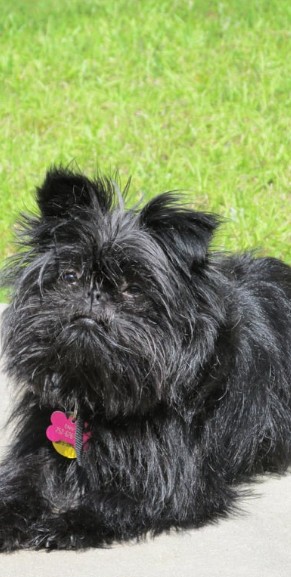
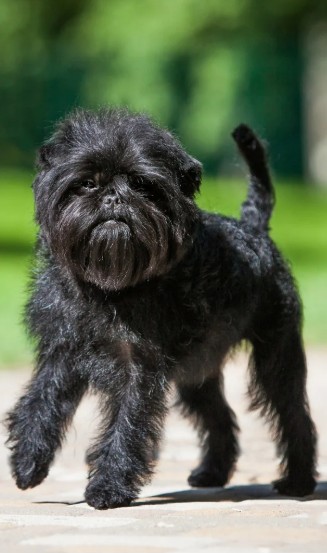
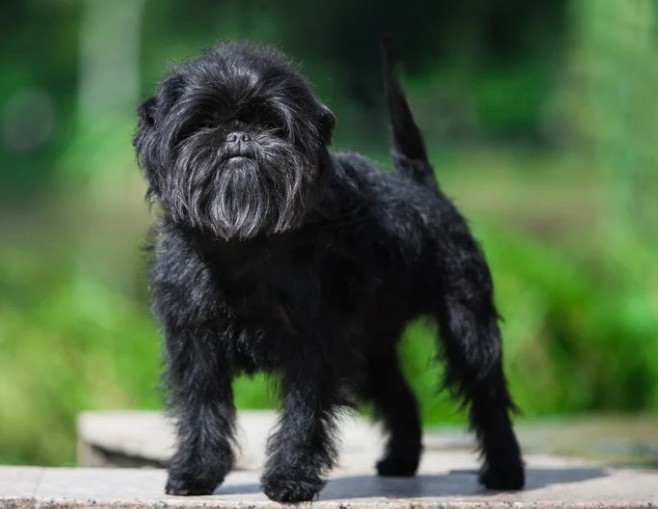
Loyalty isn’t loud—it’s selective.
They don’t love everyone—and that’s the beauty. When an Affenpinscher chooses you, it’s a bond forged in observation, trust, and quiet understanding. They don’t follow blindly—they follow meaningfully.
Health Concerns: Protecting Your Affenpinscher’s Well-being
Orthopedic Challenges in Toy Breeds
Patellar luxation stands as one of the most common health challenges facing your Affenpinscher. This condition, where the kneecap slips out of its normal groove, affects many toy breeds but seems particularly prevalent in Affenpinschers. You might notice your dog suddenly lifting a back leg while running, appearing to skip or hop for a few steps before returning to normal gait. This “skipping” motion is the classic sign of a luxating patella, and while it might seem harmless or even cute, it indicates a serious orthopedic issue requiring veterinary attention.
The genetic component of patellar luxation means responsible breeding practices are crucial, but environmental factors also play a role. Maintaining your Affenpinscher at an ideal weight reduces stress on the knee joints. Avoiding high-impact activities like jumping from heights (yes, that means no more leaping off the couch) can prevent progression. Some cases require surgical intervention, particularly if the luxation is severe or causing pain. Early detection through regular veterinary examinations allows for management strategies that can prevent or delay the need for surgery.
Legg-Calvé-Perthes disease, though less common, presents another orthopedic concern. This condition involves the degradation of the femoral head (the ball part of the hip’s ball-and-socket joint), typically appearing in young Affenpinschers between 4-12 months old. Watch for limping, reluctance to bear weight on a rear leg, or muscle atrophy in the affected limb. Early intervention is crucial – this condition is painful and progressive without treatment.
Breathing and Brachycephalic Considerations
Your Affenpinscher’s endearing flat face comes with respiratory considerations that impact daily life. While not as extreme as some brachycephalic breeds, Affenpinschers can experience breathing difficulties, particularly in hot weather or during intense exercise. You might notice increased panting, snoring, or snorting sounds – these aren’t just cute quirks but indicators of anatomical challenges in air flow.
Temperature regulation becomes critically important. Your Affenpinscher’s shortened airways make panting – their primary cooling mechanism – less efficient. During summer months, exercise should be limited to cooler morning or evening hours. Always carry water, and watch for signs of heat stress: excessive panting, drooling, weakness, or disorientation. Some owners find cooling vests or mats helpful for maintaining comfortable body temperature during warm weather.
The brachycephalic anatomy also affects anesthesia risk, making routine procedures potentially more complicated. Discuss this with your veterinarian before any surgery, no matter how minor. They may recommend additional pre-operative testing or specialized monitoring during procedures. Some Affenpinschers benefit from surgical interventions to improve breathing, such as widening narrow nostrils or reducing elongated soft palate tissue.
Eye Health: Windows to Their Soul Need Protection
Those expressive, prominent eyes that give your Affenpinscher such character also represent a vulnerability. The bulging nature of their eyes makes them more susceptible to injury from everyday activities – running through bushes, playing with other pets, or even vigorous face rubbing. Corneal ulcers can develop quickly and may not show obvious symptoms initially beyond increased blinking or tearing.
Regular eye examinations should be part of your Affenpinscher’s health routine. Learn to recognize signs of eye problems: redness, discharge, squinting, or pawing at the face. Some Affenpinschers develop distichiasis, where extra eyelashes grow from abnormal locations and irritate the cornea. While this sounds minor, these misplaced lashes can cause significant discomfort and potentially serious damage if left untreated.
Progressive retinal atrophy (PRA), though less common, can occur in the breed. This genetic condition causes gradual vision loss, typically beginning with night blindness. While there’s no cure, early detection allows you to adapt your home environment and training to accommodate vision changes. Regular ophthalmologic screenings, especially for breeding dogs, help identify carriers and reduce disease prevalence in future generations.
Lifestyle & Environment: Creating the Perfect Affenpinscher Home
Apartment Living: Small Space, Big Personality
Your Affenpinscher’s compact size makes them seem perfect for apartment living, and in many ways, they are. However, successful apartment life with an Affenpinscher requires understanding and managing their watchdog tendencies. That alertness that made them excellent ratters translates to notifying you (and your neighbors) of every footstep in the hallway, every door closing, and every delivery truck approaching. This isn’t a flaw to be corrected but an instinct to be managed.
Creating a calm environment helps minimize reactive barking. Position your Affenpinscher’s favorite resting spots away from windows overlooking busy areas. White noise machines or calming music can mask triggering sounds from neighboring units. When they do alert bark, acknowledge their warning with a calm “thank you” before redirecting their attention. This validates their communication while teaching them that one or two barks suffice.
The beauty of apartment living with an Affenpinscher is that their exercise needs can be largely met indoors. Transform your living space into an adventure playground: cardboard boxes become tunnels, hallways become racetracks, and stairs (if available) provide excellent exercise. This adaptability makes them ideal urban companions, thriving in spaces where larger, more active breeds might struggle.
Managing Separation: Building Independence
Despite their independent streak, Affenpinschers form such strong bonds with their humans that separation can be challenging. Your Affenpinscher doesn’t just prefer your company – they consider themselves an integral part of whatever you’re doing. This intensity of attachment means that sudden, prolonged separations can trigger anxiety, destructive behavior, or excessive vocalization.
Building separation tolerance requires gradual conditioning from puppyhood. Start with micro-separations – stepping outside for mere seconds, then gradually extending the duration. The key is returning before anxiety peaks, making separations no big deal. Create positive associations with alone time by providing special toys or treats that only appear when you leave. Puzzle feeders or Kong toys filled with frozen treats can occupy those first crucial minutes after departure.
For adult Affenpinschers with established separation anxiety, progress may be slower but is still achievable. Consider crate training as a safe space rather than confinement – many Affenpinschers find comfort in den-like environments. Some benefit from calming supplements or pheromone diffusers, though these should complement, not replace, behavioral modification. In severe cases, consulting with a veterinary behaviorist may be necessary to develop a comprehensive treatment plan.
Multi-Pet Households: Navigating Social Dynamics
Introducing an Affenpinscher to a multi-pet household requires careful consideration of their unique personality traits. Their history as independent workers means they often prefer being the only dog or at least the dominant personality. This doesn’t mean they can’t live harmoniously with other pets, but success requires understanding and respecting their social preferences.
With other dogs, size matters less than temperament. Your Affenpinscher won’t back down from a Great Dane but might coexist peacefully with a laid-back Mastiff who respects boundaries. Same-sex aggression can occur, particularly between intact males, so opposite-sex pairings often work better. Introduce new dogs gradually, on neutral territory, allowing your Affenpinscher to maintain their status as the established resident.
Cats present an interesting dynamic. While the Affenpinscher’s prey drive might suggest incompatibility, many learn to coexist with, or even befriend, household cats. The key is early socialization and clear boundaries. Your Affenpinscher needs to understand that the cat is family, not prey. Conversely, the cat needs escape routes and high perches where they can retreat if the Affenpinscher becomes too enthusiastic. Some Affenpinschers and cats develop remarkable friendships, playing and even sleeping together.

Senior Care: Aging Gracefully with Your Affenpinscher
Recognizing Age-Related Changes
As your Affenpinscher enters their golden years (typically around 8-10 years old), you’ll notice subtle changes that require adjustments in care. The fierce independence might soften into a greater desire for comfort and routine. That dog who once patrolled the house all night might now prefer sleeping soundly beside your bed. These changes aren’t decline but rather a natural progression deserving of respect and accommodation.
Cognitive changes can be particularly noticeable in intelligent breeds like Affenpinschers. You might observe moments of confusion, changes in sleep patterns, or altered responses to familiar commands. Canine cognitive dysfunction, similar to dementia in humans, affects many senior dogs. Maintaining mental stimulation through gentle training, puzzle toys, and novel experiences (within comfort limits) can help preserve cognitive function. Some veterinarians recommend supplements like omega-3 fatty acids or SAMe to support brain health.
Physical changes require vigilant monitoring. That slight hesitation before jumping onto the couch might indicate developing arthritis. The increased water consumption could signal kidney issues. Regular veterinary check-ups become even more critical, potentially increasing to twice yearly. Blood work can catch problems early when treatment is most effective. Don’t dismiss changes as “just old age” – many conditions are manageable with proper intervention.
Adapting Care for Senior Needs
Your senior Affenpinscher’s environment needs thoughtful modification. Those favorite perches might become inaccessible as jumping becomes difficult. Provide ramps or pet stairs to maintain independence while preventing injury. Non-slip rugs on smooth floors prevent slips that could cause serious injury in older, more fragile bones. Consider raising food and water bowls to reduce neck strain, particularly important for dogs with arthritis.
Exercise remains important but requires modification. Instead of one longer walk, several short, gentle outings might better suit your senior Affenpinscher. Swimming, if available and tolerated, provides excellent low-impact exercise. Mental stimulation becomes even more valuable as physical capabilities decrease. Simple training exercises, even teaching new tricks, keeps the mind sharp while providing bonding time.
Nutritional needs shift with age. Senior formulas typically contain fewer calories (to prevent weight gain with decreased activity) but increased joint support supplements. Some senior Affenpinschers develop dental issues that make chewing difficult – softening kibble with warm water or switching to canned food might be necessary. Monitor weight carefully, as both weight gain and loss can indicate health issues.
Quality of Life Considerations
The Affenpinscher’s typical lifespan of 12-15 years means you’ll likely share many wonderful senior years together. Focus on quality rather than quantity of life. Your senior Affenpinscher might not race around like they used to, but they can still enjoy favorite activities in modified forms. That dog who once demanded hour-long play sessions might now prefer gentle grooming sessions or quiet companionship.
Pain management becomes increasingly important. Affenpinschers, with their stoic, independent nature, might hide discomfort until it becomes severe. Watch for subtle signs: reluctance to move, changes in appetite, altered breathing patterns, or behavioral changes. Modern veterinary medicine offers numerous pain management options, from medications to acupuncture to physical therapy. Don’t let your Affenpinscher suffer in silence due to concerns about medication or treatment costs.
End-of-life decisions, while difficult to contemplate, are part of responsible pet ownership. Your Affenpinscher’s quality of life should guide these decisions. Consider factors like appetite, interest in surroundings, ability to perform basic functions, and overall comfort. Many veterinarians use quality of life scales to help owners make these difficult decisions objectively. Remember, choosing to prevent suffering is the final act of love you can offer your devoted companion.
Grooming & Maintenance: Keeping Your Affenpinscher Looking Their Best
Coat Care Essentials
Your Affenpinscher’s wiry, dense coat requires regular attention to maintain its characteristic scruffy-yet-neat appearance. This isn’t a wash-and-go breed – their coat needs hand-stripping or careful clipping to preserve texture and appearance. The harsh outer coat naturally repels dirt and debris (remember their working dog heritage), but without proper maintenance, it can become soft and lose its protective qualities.
Hand-stripping, the traditional grooming method, involves plucking dead hair to encourage new growth. While this sounds uncomfortable, when done correctly, it’s painless – you’re removing hair that’s already loose. This method maintains the coat’s proper texture and color. However, it’s time-consuming and requires skill, so many owners opt for professional grooming every 6-8 weeks. Between professional sessions, weekly brushing with a slicker brush prevents matting and removes loose undercoat.
For pet Affenpinschers (as opposed to show dogs), clipping is an acceptable alternative. While it changes the coat texture over time, making it softer and potentially lighter in color, it’s more practical for many owners. If you choose clipping, maintain the breed’s characteristic appearance: longer hair on the head, neck, chest, stomach, and legs, with shorter hair on the back and rear. The facial furnishings – that endearing monkey-like beard and eyebrows – require careful trimming to maintain expression while ensuring clear vision.
Dental Hygiene: A Critical Component
Dental care for your Affenpinscher isn’t optional – it’s essential for overall health and longevity. Small breeds are notoriously prone to dental disease, and Affenpinschers are no exception. By age two, most dogs show signs of periodontal disease, but with proper care, you can significantly slow or prevent progression. Daily brushing is ideal, though even three times weekly makes a substantial difference.
Introducing tooth brushing requires patience and positive associations. Start by letting your Affenpinscher taste the enzymatic toothpaste (never use human toothpaste – it’s toxic to dogs). Progress to rubbing the paste on their teeth with your finger, then gradually introduce a soft-bristled brush or finger brush. Focus on the outer surfaces of teeth, particularly the back molars where tartar accumulates most readily. Make it enjoyable with praise and rewards.
Professional dental cleanings under anesthesia become necessary despite your best home care efforts. Your veterinarian will recommend frequency based on your individual dog’s needs – some Affenpinschers need annual cleanings, while others might go longer between procedures. Don’t delay these cleanings due to anesthesia concerns; untreated dental disease causes pain and can lead to systemic infections affecting heart, liver, and kidneys.
Conclusion: Is the Affenpinscher Right for You?
After exploring every facet of the Affenpinscher’s character, care needs, and quirks, you might be wondering if this remarkable little dog is your perfect match. The answer isn’t simple because the Affenpinscher isn’t a simple dog. They’re complex, intelligent, independent creatures who offer extraordinary companionship to the right owners but can frustrate those expecting a typical toy breed experience.
Your ideal Affenpinscher owner is someone who appreciates intelligence and independence rather than being frustrated by it. You understand that “stubborn” is often code for “thinking it through,” and you’re patient enough to work with, rather than against, this trait. You find humor in daily life and can laugh at your dog’s antics, even when they’re testing boundaries. You’re consistent with rules but flexible in approach, understanding that force and dominance have no place in training these sensitive, proud little dogs.
The perfect Affenpinscher home might be an apartment or a mansion – size doesn’t matter as much as the quality of interaction provided. What matters is that you’re present, engaged, and committed to meeting their social and mental needs. You understand that leaving an Affenpinscher alone for long workdays isn’t ideal, and you’ve made arrangements – whether doggy daycare, a pet sitter, or working from home – to minimize isolation. You’re prepared for the financial commitment: quality food, regular grooming, potential health issues, and the fact that toy breeds often require specialized veterinary care.
Consider carefully if you have young children. While Affenpinschers can thrive in families with respectful, gentle older children, they’re not ideal for households with toddlers or rough-playing youngsters. Their small size makes them vulnerable to injury, and their low tolerance for mishandling means they might nip when pushed beyond their limits. This isn’t aggression – it’s self-preservation from a dog too small to simply walk away from unwanted attention.
Making the Decision: A Honest Self-Assessment
Before bringing an Affenpinscher into your life, ask yourself these crucial questions:
Can you handle the watchdog barking? Your Affenpinscher will alert you to everything they deem noteworthy. While training can minimize excessive barking, you cannot completely eliminate this hardwired behavior. If you need absolute quiet or have close neighbors with no tolerance for occasional barking, this might not be your breed.
Are you prepared for grooming commitments? That adorable scruffy face requires regular professional grooming or significant time investment in home maintenance. Budget $75-150 every 6-8 weeks for professional grooming, or prepare to learn hand-stripping techniques. Add daily face cleaning, regular nail trims, and dental care to your routine.
Do you have patience for training challenges? Housetraining might take months, not weeks. Your Affenpinscher might decide some commands are suggestions rather than requirements. They’ll test boundaries and negotiate terms. If you need immediate, unquestioning obedience, consider a different breed. But if you enjoy the challenge of working with an intelligent, independent thinker, you’ll find training an Affenpinscher deeply rewarding.
Can you provide appropriate socialization? Your Affenpinscher needs exposure to various people, places, and situations during puppyhood to develop into a confident adult. However, this socialization must be carefully managed – overwhelming a young Affenpinscher can create fearfulness rather than confidence. Are you prepared to invest time in proper socialization while respecting your dog’s limits?
The Rewards of Affenpinscher Ownership
For those who align with the Affenpinscher’s unique personality, the rewards are immeasurable. You’ll never lack for entertainment – these dogs are natural comedians who seem to understand the value of laughter. Their antics aren’t random; they’re calculated performances designed to amuse their beloved humans. You’ll find yourself sharing stories of your Affenpinscher’s latest escapade, joining online communities of equally besotted owners, and boring non-dog people with endless photos of that expressive little face.
The loyalty of an Affenpinscher, once earned, is absolute. While they might not shower everyone with affection, their chosen people receive devotion that borders on obsessive. You’ll never go to the bathroom alone again, never eat a meal without those eyes watching every bite, and never feel truly alone as long as your Affenpinscher is near. This intensity of connection creates a bond that many owners describe as unlike any other dog relationship they’ve experienced.
Their portable size opens up lifestyle possibilities that larger dogs might restrict. Your Affenpinscher can accompany you on errands, join you for outdoor café lunches, and travel relatively easily. Many airlines allow them in-cabin, hotels often waive pet restrictions for small dogs, and their minimal space requirements mean they adapt well to lifestyle changes. Whether you’re in a studio apartment or planning to RV across the country, your Affenpinscher just wants to be where you are.
The intelligence that makes training challenging also makes daily life endlessly interesting. Your Affenpinscher will surprise you with their problem-solving abilities, their emotional intelligence, and their ability to adapt to your routines. They’ll develop unique ways of communicating their needs, create their own games, and show creativity in their interactions with their environment. Living with an Affenpinscher means constantly discovering new facets of their personality.
Health Investment: Planning for the Future
Responsible Affenpinscher ownership means preparing for potential health challenges. While many Affenpinschers live long, healthy lives, the breed’s predispositions require financial planning. Pet insurance, started while your Affenpinscher is young and healthy, can offset major medical expenses. Research policies carefully – some exclude breed-specific conditions or have low annual limits that won’t cover serious issues.
Establish relationships with both a regular veterinarian and emergency clinic before you need them. Interview veterinarians about their experience with toy breeds and brachycephalic dogs. Not all vets are equally comfortable with the unique challenges these dogs present. Having a veterinarian who understands Affenpinschers can make the difference between catching problems early and dealing with emergencies.
Create a health savings fund specifically for your Affenpinscher. Even with insurance, deductibles, co-pays, and non-covered services add up. Dental cleanings alone might cost $300-800 annually. Patellar luxation surgery can run $1,500-4,000 per knee. Emergency veterinary visits for breathing difficulties or injuries can quickly reach thousands of dollars. This isn’t meant to discourage but to ensure you’re prepared for the full scope of commitment.
Finding Your Affenpinscher: The Journey Begins
If you’ve read this far and still feel excited about adding an Affenpinscher to your life, the next step is finding the right dog. Responsible breeders are essential for getting a healthy, well-socialized puppy. Look for breeders who health test breeding dogs for patellar luxation, eye conditions, and cardiac issues. They should willingly share test results and welcome questions about their breeding program.
Good breeders will interview you as thoroughly as you interview them. They’ll want to know about your lifestyle, experience with dogs, and plans for the puppy. They might require references, home visits, or contracts stipulating you’ll return the dog if you can’t keep it. These aren’t obstacles – they’re signs of a breeder who cares about their puppies’ futures. Be prepared to wait; responsible breeders often have waiting lists, and the right puppy is worth the wait.
Consider adult Affenpinschers through breed-specific rescues. Adult dogs offer advantages: their temperament is established, they’re often past the destructive puppy phase, and many are already house-trained. Rescue organizations carefully evaluate dogs and match them with appropriate homes. Adopting an adult Affenpinscher can be incredibly rewarding, giving a deserving dog a second chance at happiness.
Avoid puppy mills and pet stores at all costs. That adorable puppy in the window likely came from deplorable conditions and may have serious health and behavioral issues. “Designer” Affenpinscher mixes (Affenpoos, Affenhuahuas, etc.) might seem appealing, but mixing breeds doesn’t guarantee the best of both – you might get the challenging traits of both breeds with the health issues of each.
Living the Affenpinscher Life: A Daily Adventure
Life with an Affenpinscher settles into delightful routines punctuated by surprising moments of humor and affection. Your mornings might begin with a small, warm body pressed against you, patient but alert, waiting for signs you’re awake. Once you stir, the day officially begins – breakfast must be served promptly (they’ve been patient long enough), followed by the morning patrol of the territory (your backyard or usual walking route).
Throughout the day, your Affenpinscher maintains their watchdog duties while managing to nap in strategic locations that allow monitoring of household activities. They’ll follow you from room to room, not anxiously but companionably, setting up temporary headquarters wherever you’re working. During video calls, they might make cameo appearances, charming your colleagues with their expressive faces. When doorbell rings, they spring into action, alerting you to visitors with enthusiasm that suggests they’ve been waiting their whole life for this moment.
Evenings bring cuddle time, but on their terms. Your Affenpinscher might start on your lap, then move to the arm of your chair, then to their own bed, then back to your lap. They’re affectionate but independent, loving but not clingy. Bedtime routines become sacred – perhaps a final patrol of the house, a specific toy that must be brought to bed, or a particular way they circle before settling for the night.
The Affenpinscher Community: You’re Not Alone
Owning an Affenpinscher introduces you to a passionate, supportive community of fellow enthusiasts. Online forums and social media groups dedicated to the breed offer advice, share experiences, and celebrate the unique joy of Affenpinscher ownership. You’ll find yourself exchanging stories about similar behaviors, comparing grooming techniques, and sharing recommendations for everything from veterinarians to toy preferences.
Local and national Affenpinscher clubs provide opportunities for in-person connections. Even if you’re not interested in showing, these clubs offer educational programs, health clinics, and social events. Meeting other Affenpinschers helps you understand your dog better – seeing breed traits across multiple dogs distinguishes individual personality from breed characteristics. Many clubs also coordinate rescue efforts, offering opportunities to give back to the breed you’ve grown to love.
The collective knowledge of experienced Affenpinscher owners proves invaluable, especially during challenging periods. Whether you’re dealing with a training plateau, a health concern, or just need reassurance that your Affenpinscher’s latest quirk is normal, the community provides support. These connections often evolve into friendships that extend beyond dog ownership, united by appreciation for these remarkable little dogs.
Final Thoughts: A Love Like No Other
The Affenpinscher isn’t just a pet – they’re a lifestyle choice, a daily adventure, and a devoted companion rolled into one small, scruffy package. They’ll challenge you, amuse you, occasionally frustrate you, but always, always charm you. Their combination of courage, comedy, and companionship creates a relationship unlike any other in the canine world.
If you choose to share your life with an Affenpinscher, you’re not just getting a dog. You’re gaining a partner who will share your daily routines, celebrate your successes, comfort you during difficulties, and make you laugh when you need it most. They’ll teach you patience, show you the value of persistence, and remind you that the best things in life often come in small, slightly mischievous packages.
The journey with an Affenpinscher isn’t always easy, but it’s always interesting. Every day brings opportunities to deepen your understanding of this complex, intelligent breed. You’ll become fluent in Affenpinscher communication, expert in their care, and completely, utterly, hopelessly devoted to your monkey-faced companion. And that, perhaps, is the true magic of the Affenpinscher – they don’t just live with you; they become an irreplaceable part of who you are. 🧡
Welcome to the wonderful world of Affenpinscher ownership – may your journey be filled with love, laughter, and just the right amount of mischief. 🐾

